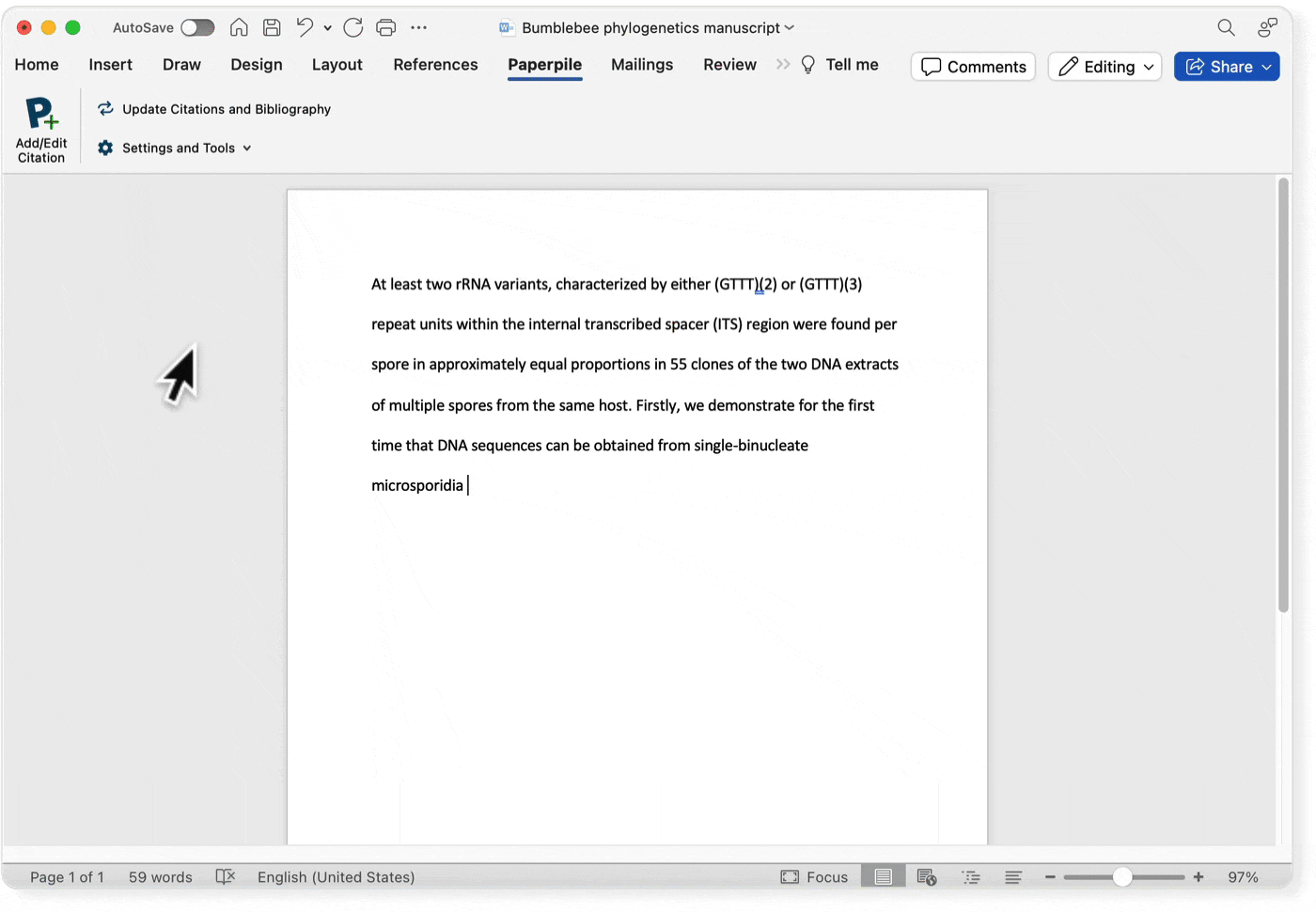What is a DOI?

DOI stands for "digital object identifier." Also known as a permalink, a DOI is an article's permanent online location. DOIs are used for a variety of academic and non-academic sources that are located online.
Using DOIs in APA and other styles
APA and other styles now require DOIs to be included in references, if they are available:
Warren, R., Price, J., Graham, E., Forstenhaeusler, N., & VanDerWal, J. (2018). The projected effect on insects, vertebrates, and plants of limiting global warming to 1.5°C rather than 2°C. Science (New York, N.Y.), 360(6390), 791–795. https://doi.org/10.1126/science.aar3646
The DOI is included at the very end of the reference. If an online work has both a DOI and a URL, include only the DOI. However, if the source only has a URL, then include the URL at the end of the reference.
If the DOI is too long, APA allows the use of DOI shorteners like shortDOI®, a service created by the International DOI Foundation to create shortDOIs.
Tip: Instead of manually adding citations with DOIs to your documents, which is error-prone and strenuous, consider using a reference manager like Paperpile to format and organize your citations. Paperpile allows you to save and organize your citations for later use and cite them in thousands of citation styles directly in Google Docs, Microsoft Word, or LaTeX, including the DOI:

How to find the DOI
For journal articles, the DOI can typically be found at the top of the page, along with the title, author's name, and other publication information. PDFs of journal articles downloaded from an academic database often include the DOI on the cover page and/or at the bottom of each page.
➡️ Learn how to find a DOI in our “How to find a DOI” guide.
DOI examples and format
There are three different ways of writing a DOI:
- http:/dx.doi.org
- doi: xxxx or DOI: xxxx
- https://doi.org/xxxx
The most recent and preferred format is the last one (https://doi.org/xxxx), but any type is valid as long as it includes the right alphanumeric identifier. A correct DOI would look something like this: https://doi.org/10.1080/10509585.2015.1092083.
Why is it important to use DOIs?
It’s important to use DOIs when available because they add credibility to the source. If a citation includes a DOI, it means that the source is unique and real.
Ultimately, if the source has a DOI, use it! Do not use the URL of the source if a DOI is available. URLs might change over time, while DOIs do not.
Frequently Asked Questions about DOIs
🎰 Is a DOI the same as a URL?
No, URLs and DOIs are not interchangeable. A DOI is an unchanging, unique alphanumeric identifier that labels digital material and pinpoints its location online, whereas a URL is a digital locator that can change over time.
📟 What is a DOI example?
The preferred format for a DOI is https://doi.org/xxxx, without a period at the end. A correct DOI would look something like this: https://doi.org/10.1080/10509585.2015.1092083.
🔑 How do I find the DOI?
DOIs are typically found near the top of an article page, along with the author and publication information. They can also be found on PDFs of online journal articles, at the bottom of each page, or on a cover page.
🔏 Why should I use DOIs in my citations?
DOIs were invented for a reason. Digital object identifiers allow readers to locate specific material online. They also add credibility to your sources.
📀 When should I use a DOI instead of a URL?
Whenever the source has a DOI, use it! Do not use the URL of the source if a DOI is available. However, if the material does not feature a DOI, add the URL to your citation instead.


